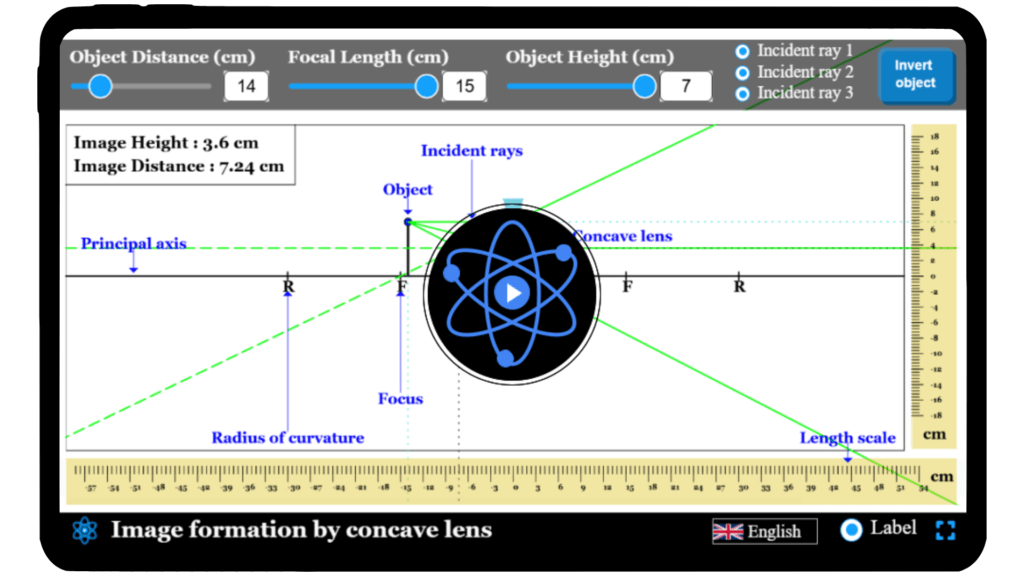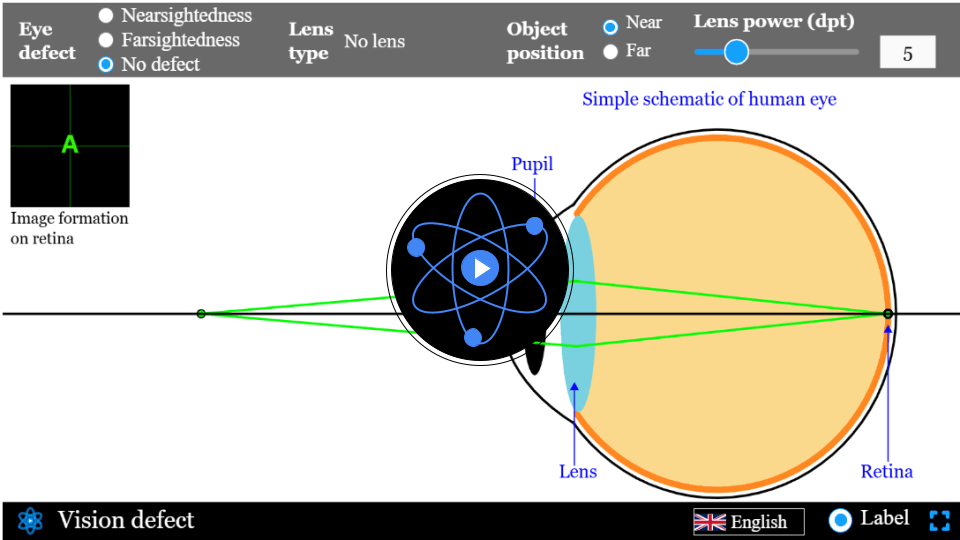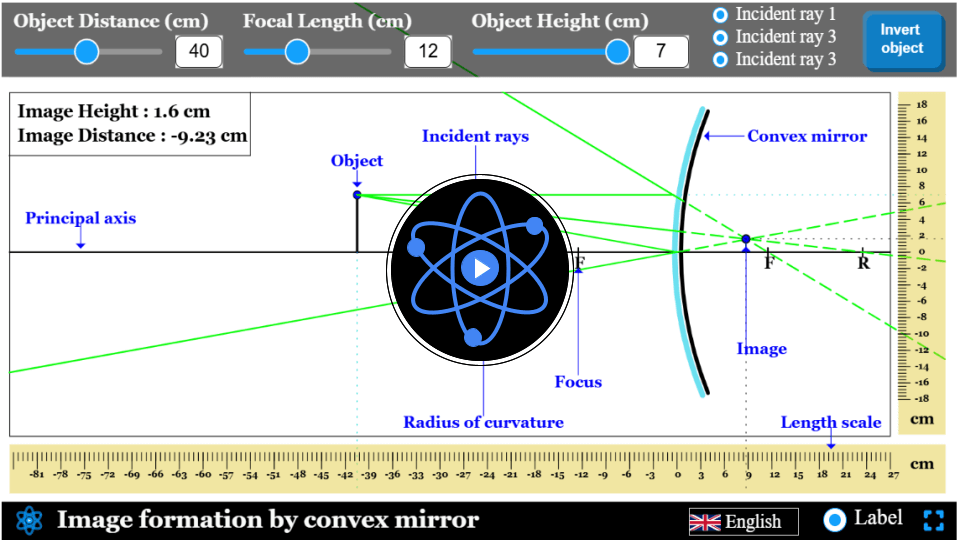Concave lens simulator
Explore how concave lenses form images and experiment with different configurations to see their effects using our interactive simulator.
Concave lens
Discover the magic behind how eyeglasses correct vision and how optical devices manipulate light using the fascinating concave lens! These incredible optical tools, thinner at the center than the edges, spread light rays outward to create virtual images that are smaller and upright.
Our simulator brings concave lenses to life, letting you explore their fascinating properties in vivid detail. Experiment with the controls, observe the captivating effects, and deepen your understanding of this essential optical device. Dive into the simulation below and start exploring now!
$$ \frac{1}{f} = \frac{1}{v} – \frac{1}{u} $$
Mathematical description
Lens formula relates the object distance, image distance, and focal length of a lens.
where:
- \( f \) is the focal length of the mirror
- \( u \) is the object distance
- \( v \) is the image distance
Tutorial video
Take a quick spin through our simulator!
FAQs on Concave Lens
Qus 1. What is a concave lens?
A concave lens is a diverging lens that is thinner at the center than at the edges. It spreads out light rays that pass through it, making objects appear smaller. Common uses include correcting myopia (nearsightedness).
Qus 2. How does a concave lens work?
A concave lens diverges light rays that enter it, causing them to spread out. This divergence creates a virtual image on the same side of the lens as the object, making it appear smaller and closer. It’s commonly used in optical devices to spread light.
Qus 3. Can concave lens produce a real image?
No, a concave lens cannot produce a real image. Concave lenses are diverging lenses, meaning they spread out light rays that pass through them. As a result, the image formed by a concave lens is always virtual, meaning it appears to be on the same side as the object, upright, and smaller than the object. Real images, on the other hand, are formed when light rays converge, which is not possible with a concave lens.
Qus 4. How to calculate the focal length of a concave lens?
The focal length of a concave lens can be calculated by using the lens formula. The lens formula is
$$ \frac{1}{f} = \frac{1}{v} – \frac{1}{u} $$
where:
f is the focal length,
v is the image distance, and
u is the object distance.
Qus 5. What are the uses of a concave lens?
- Concave lenses are used in laser devices, flashlights, peepholes in doors and optical instruments like cameras and telescopes to diverge light and correct vision or focus light paths.
- Concave lenses are also used in glasses to correct nearsightedness. Convex lens diverge light rays before they reach the eye, reducing the eye’s focusing power and allowing the image to form on the retina.
- Astronomers use concave lenses in telescopes to diverge light rays before they enter a convex lens, which then converges them to form clear, magnified images of distant celestial objects.
Qus 6. What is the difference between concave and convex lens?
Concave lenses diverge light and create virtual images, used for correcting nearsightedness. Convex lenses converge light and can produce real images, used for magnification and correcting farsightedness.
Qus 7. What are the ray-tracing rules for concave lens?
The following are the ray-tracing rules for convex lens:
- A ray that is initially traveling parallel to the central axis of the lens would appear to pass through the focal point for a concave lens.
- A ray that would appear to initially pass through the focal point of the lens will emerge parallel to the central axis of a concave lens.
- A ray that is directed through the center of will emerge with no change in direction.




